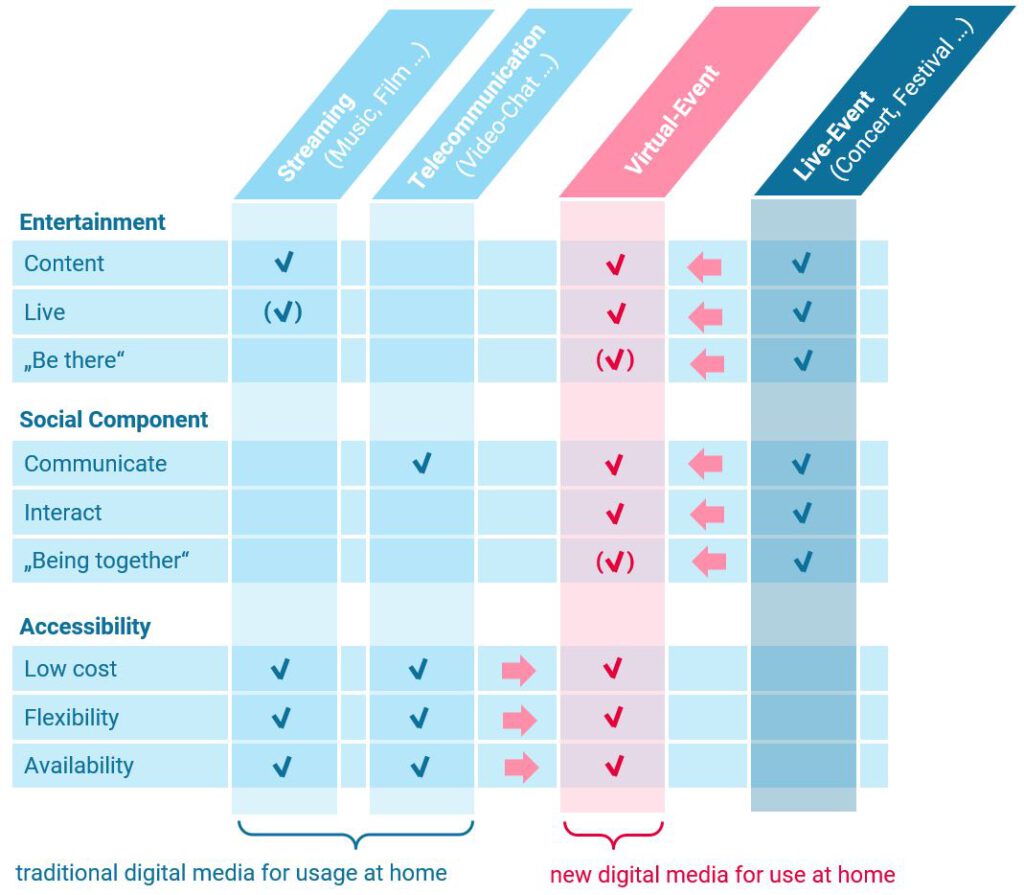Potentials of immersive and spatial computer technologies - significance for social and experience-based industries.
Is the metaverse more than just hype? Immersive spatial computing technologies that enable virtual reality, among other things, are leading to paradigm shifts in human-computer interaction and communication across distance. This creates immense scope for new possibilities of social and cultural participation.
Metaverse: more than just hype?
Hardly any other tech topic has triggered such hype as the metaverse, even though its implementation is still technologically a distant prospect. As we know, the metaverse, i.e., an embodied form of the Internet that we can enter and experience realistically, does not yet exist. Nevertheless, the potential analyses and market forecasts are literally overflowing. So are the metaverse and the technologies behind it, so-called immersive and spatial computer technologies, more than just hype? An approach to answering the question can succeed if one understands the fundamental changes that the technology brings with it.
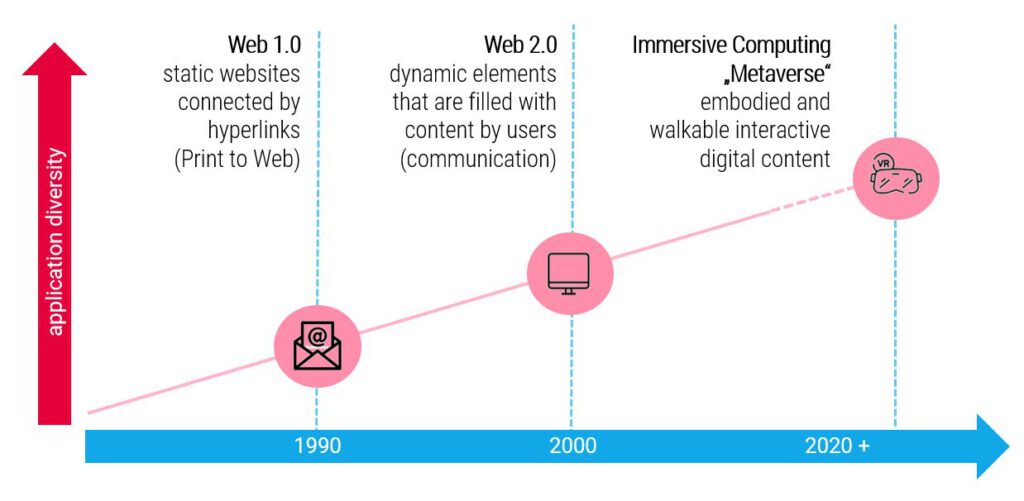
Internet Technologies in Transition: Is the Metaverse the Internet of the Future?
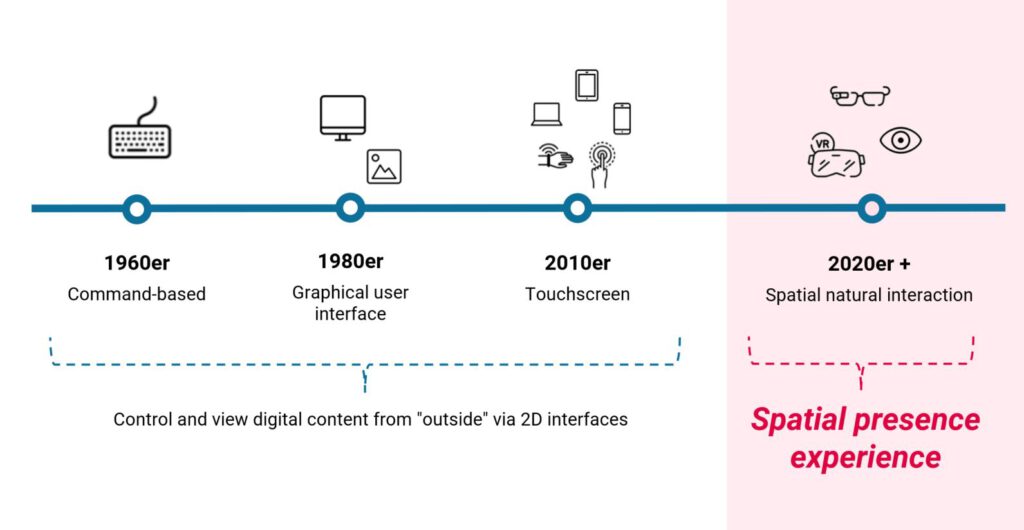
Paradigm shift in human-comupter interaction
Paradigm shift in human-comupter interaction
A fundamental paradigm shift is taking place in the nature of human-computer interaction. Interaction with computers has followed the same basic concept from the first computers to our current mobile devices. Even if we now operate digital content using graphical user interfaces and touch gestures instead of command languages, the essentials remain the same: We interact with technology via 2D interfaces and look into the digital world from the outside via screens as if through a window. With immersive and spatial computer technologies, digital content is embodied and we can enter the digital and experience and interact with content in a natural way. There is a spatial sense of presence. In other words, the feeling of being present in the virtual environment and not just viewing it from the outside. A novelty in human-technology interaction and media use.
Paradigm shift in communication over distance
A similarly fundamental paradigm shift is taking place regarding communication over distance. All previous technologies, from the first telephone to today’s video call, are based purely on the exchange of information via text, audio or video. But we cannot interact or collaborate with each other over distance. There is no sense of closeness. Using immersive and spatial computing technologies, we can be embodied by avatars in remote environments. This creates a social sense of presence as through the feeling that other remote people are actually in close proximity to me. We can experience virtual content together and interact with it together.
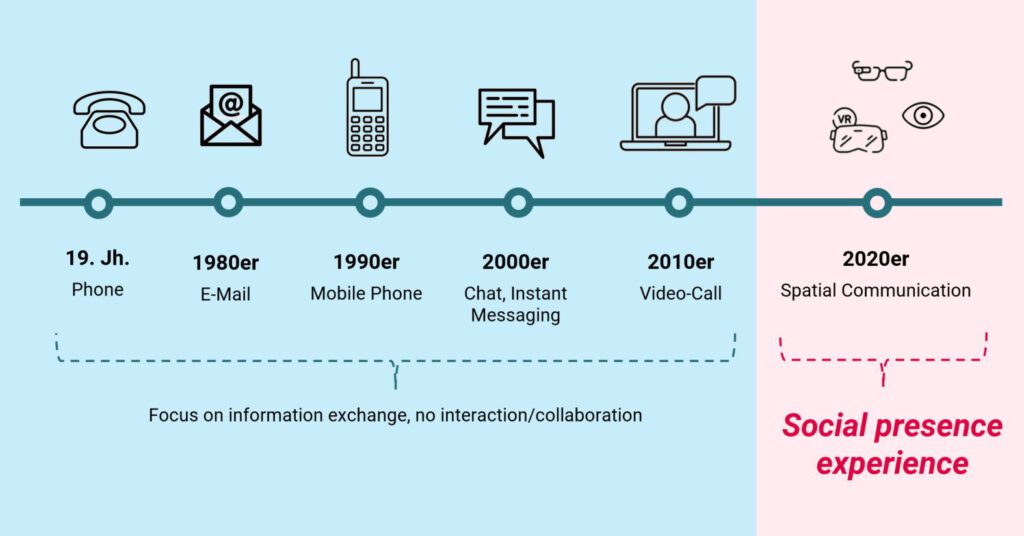
Paradigm shift in communication over distance
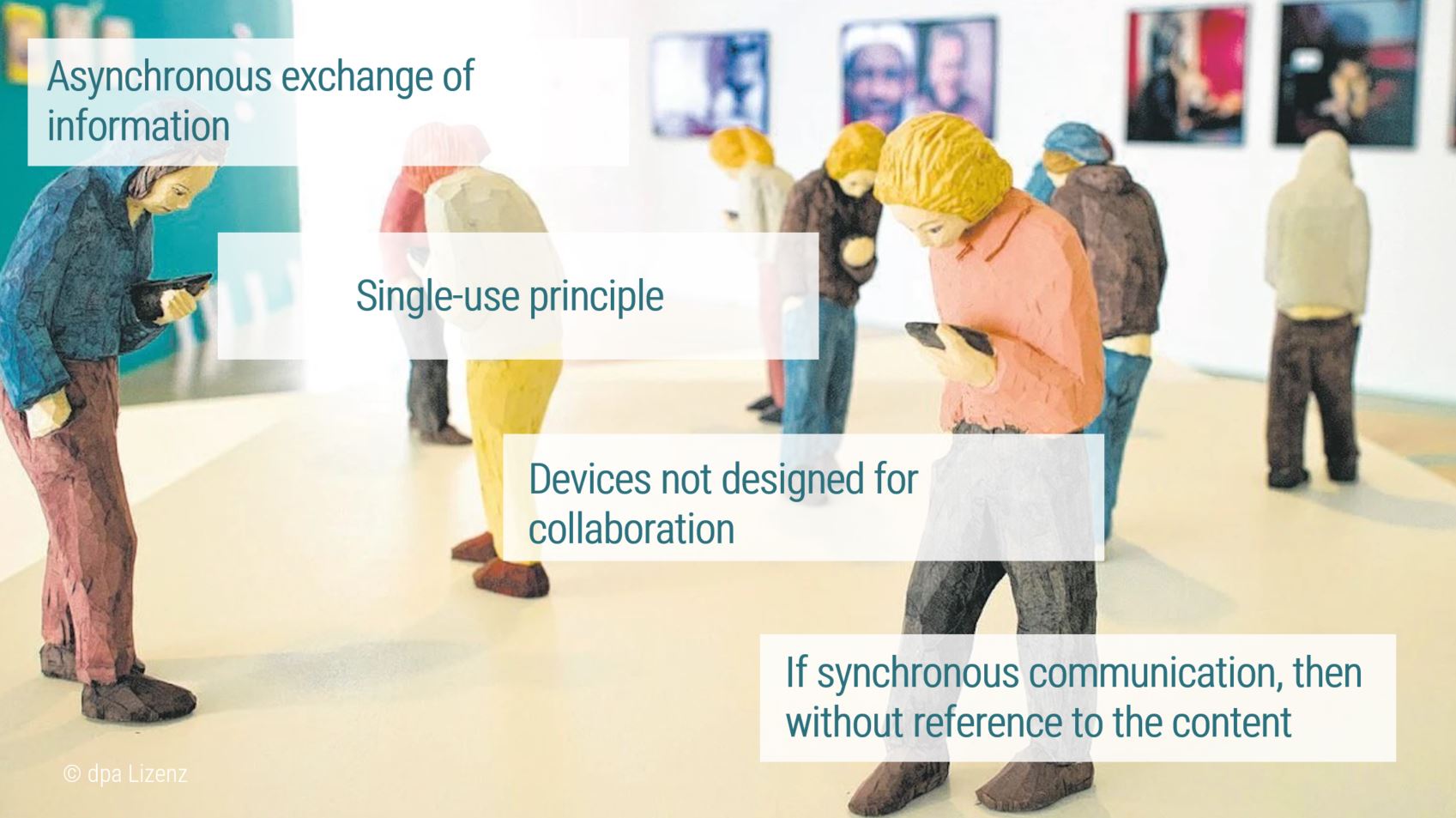
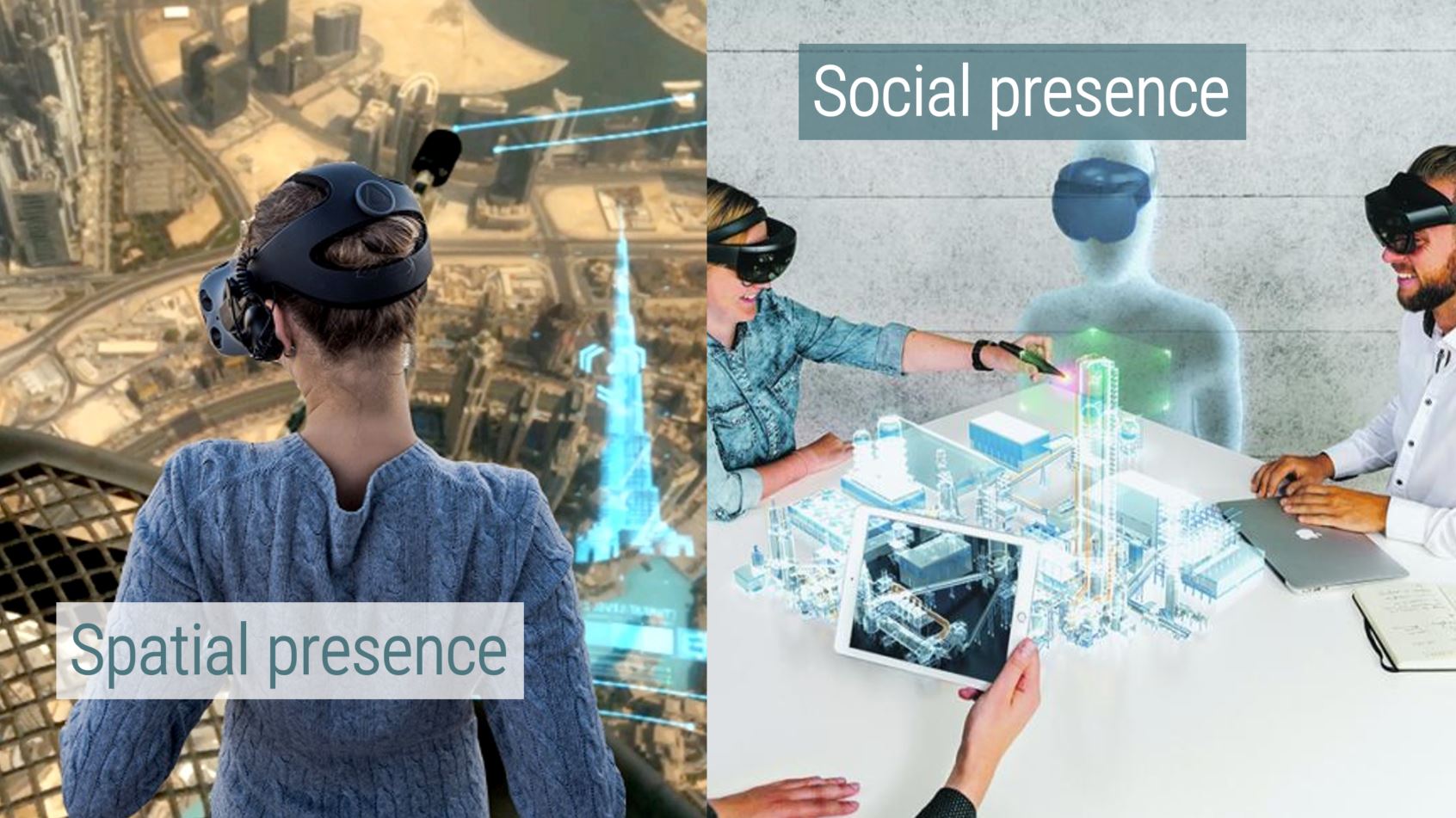
Today: connected and isolated - Tomorrow: spatially bound together
Today: connected and isolated - Tomorrow: spatially bound together
These two paradigm shifts are revolutionary in the development of digital technologies and how we use them, and combined they open up an immense space for new application possibilities. Traditional digital technologies have already fundamentally transformed many industries and changed usage habits due to their networked communication and the high availability and flexibility they bring to users. However, current devices are almost exclusively designed for one-person use and passive media consumption. As a result, we spend a large part of our day looking at small screens and communicating with each other asynchronously. For example, it is not even possible for us to surf a website together distantly. With immersive and spatial computing technologies, we are spatially and socially present and can collaborate and interact together with the same content. Thus, these technologies extend our real-world space of action and interaction socially and spatially without limits. Moreover, because digitality is not bound by real-physical boundaries, an infinite space for creativity and experience is open to us, enabling applications we are not even thinking of now.
Impact on areas of cultural and social participation
Previous digital technologies have already greatly changed many areas of cultural and social participation, for example, media streaming or social networks. Due to their high accessibility and low cost, we can consume media or communicate with other people from home or anywhere at any time. However, real social experiences, such as going to a concert or theater, cannot yet be replaced by digital formats. We actively participate and enjoy the experiences of being together with friends and other people. Due to social, economic and ecological factors, however, these forms of real-world participation are only available to us to a limited extent in terms of time and locality. With immersive and spatial computing technologies, in the future we will be able to participate in virtual or real cultural events at any time and from any location with the same accessibility and low cost that digital technologies bring. We will be able to share these experiences with others who are also geographically distant, enjoying the feeling of being part of a real event.
